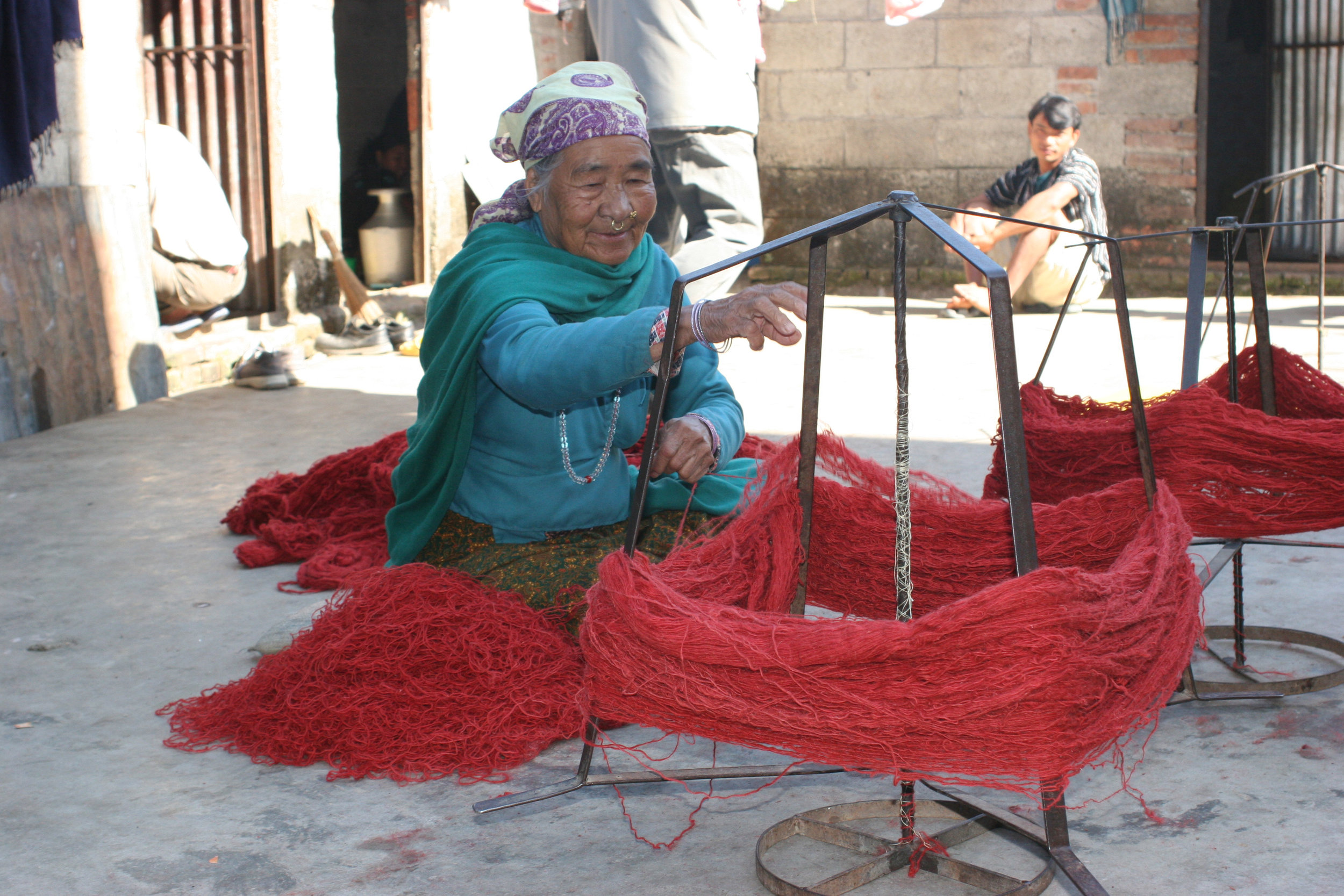Layer upon layer of skill creates a quality that begins at the simplest level. The artisan begins, by hand, building excellence into the most basic element- the fleece. The best wool is, of course, the most workable. Hand carding involves discarding the slubs and burs, then aligning the long fibers taken from Himalayan highland sheep. The resultant long staple yarn is among the worlds strongest, yet is soft and pliable contributing to each rugs natural glowing charm.




























